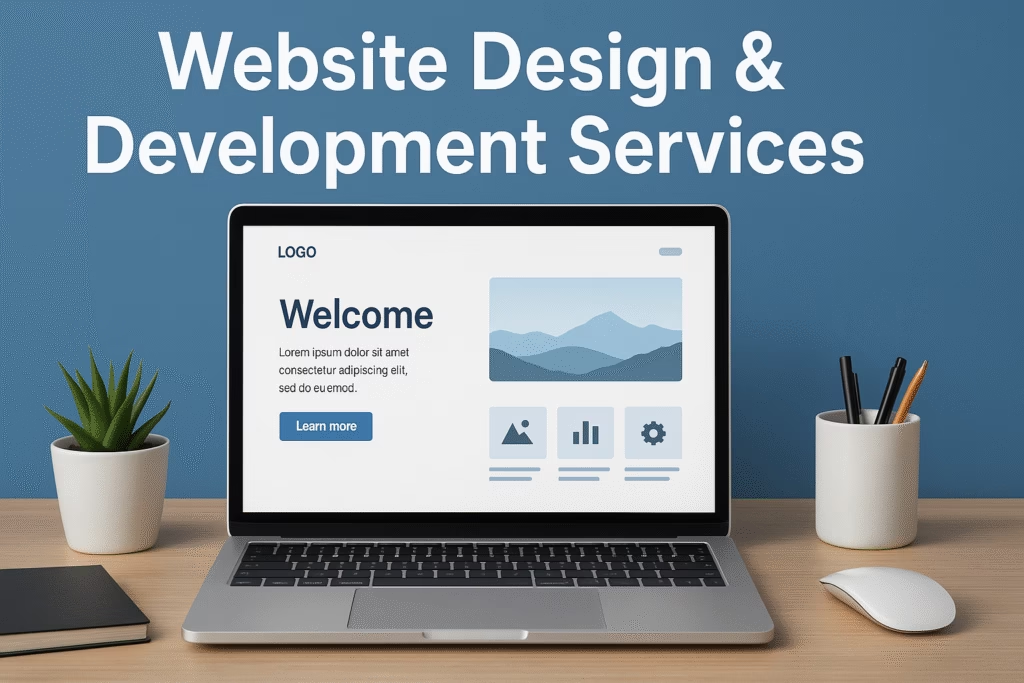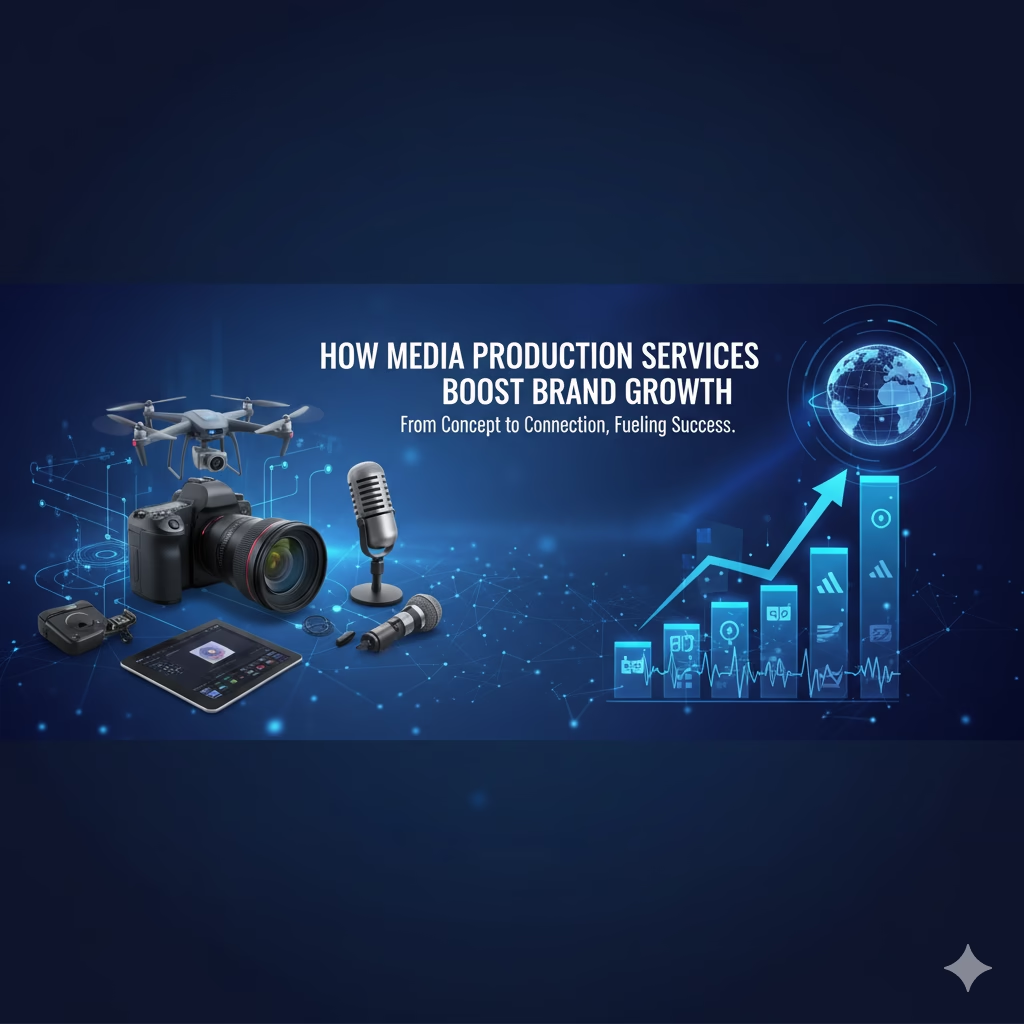In today’s fast-paced digital world, your website is more than just an online presence—it’s your brand’s first impression, sales engine, and customer engagement hub. Whether you’re a startup trying to establish credibility or an established business looking to scale, professional website design and development services play a vital role in your success.
This detailed guide will walk you through everything you need to know about website design and development, including its importance, process, benefits, and how to choose the right service provider in the USA.
1. Understanding Website Design & Development
Before diving into the process, it’s crucial to understand the distinction between website design and development—two closely related but distinct aspects of building a website.
- Website Design focuses on the visual appearance and user experience (UX). Designers work on layout, color schemes, typography, and interface elements to ensure the site looks appealing and functions intuitively.
- Website Development, on the other hand, deals with the technical implementation. Developers turn designs into functional websites using coding languages like HTML, CSS, JavaScript (front-end), and frameworks or CMS platforms (back-end) like WordPress, Shopify, or custom solutions.
Both are equally important—great design draws users in, while strong development ensures your site runs smoothly, loads quickly, and performs well across devices.
2. Why Professional Website Design & Development Matters
A professionally designed and developed website offers more than just good looks. It’s the foundation of your online marketing efforts and a key driver of conversions. Here’s why:
a. First Impressions Count
In the digital era, users form opinions about your brand within seconds. A clean, modern, and well-structured website instantly builds trust and credibility.
b. Enhanced User Experience
Professional designers use UX principles to ensure users can easily navigate your site. A positive experience leads to longer visits, lower bounce rates, and higher conversion potential.
c. Mobile Responsiveness
With over 60% of web traffic coming from mobile devices, responsive design is non-negotiable. Professional developers ensure your website adapts perfectly to screens of all sizes.
d. SEO Optimization
A good-looking site means nothing if people can’t find it. Proper development practices—like clean code, fast loading speeds, and SEO-friendly structure—help your site rank better on Google.
e. Security & Scalability
Professional web developers prioritize secure coding and ongoing maintenance. They also build scalable sites that grow with your business needs, whether it’s adding eCommerce functionality or integrating advanced APIs.
3. The Complete Website Design & Development Process
The process of creating a professional website involves several strategic phases. Each step contributes to building a powerful digital asset that delivers real business results.
Step 1: Discovery & Strategy
Before a single pixel is designed or line of code written, a successful project begins with understanding your business goals, audience, and competition.
This phase includes:
- Research & competitor analysis
- Identifying target users and their needs
- Defining the website’s core purpose and functionalities
- Creating a project timeline and scope
Step 2: Wireframing & UX Planning
Next, designers sketch wireframes—visual blueprints of each page layout. This step focuses on the user journey, ensuring visitors can easily navigate and find key information.
Step 3: Visual Design
The creative phase brings your brand to life. Designers select color palettes, fonts, images, and icons aligned with your branding. Using tools like Figma or Adobe XD, they create mockups to visualize how the final site will look.
Step 4: Front-End Development
Developers convert static designs into functional web pages using HTML, CSS, and JavaScript. The front-end ensures smooth animations, responsiveness, and interactivity.
Step 5: Back-End Development
This is where the core functionality is built. Developers use programming languages and frameworks such as PHP, Python, Node.js, or Laravel to handle databases, server-side logic, and integrations like payment gateways or CRM systems.
Step 6: Content Integration
Quality content is key to engaging users and improving SEO. This includes optimized copy, images, videos, and blog posts—uploaded and formatted for maximum impact.
Step 7: Testing & Quality Assurance
Before launch, the website undergoes rigorous testing across browsers and devices. Developers check for:
- Broken links
- Loading speed issues
- Mobile responsiveness
- SEO best practices
- Security vulnerabilities
Step 8: Launch & Optimization
Once the website is approved, it goes live. Post-launch, performance tracking and optimization ensure everything runs smoothly. Analytics tools like Google Analytics or Search Console are integrated to measure success and guide future improvements.
4. Types of Websites You Can Build
Depending on your business goals, here are some common website types professionals create:
- Corporate Websites – Showcase company information, services, and brand identity.
- eCommerce Stores – Enable online sales through platforms like Shopify or WooCommerce.
- Portfolio Websites – Ideal for creatives like photographers, designers, or agencies.
- Blogs & Magazines – Perfect for content creators or publishers.
- Landing Pages – Focused pages for marketing campaigns or lead generation.
- Web Applications – Advanced platforms with dynamic user interaction and backend systems.
Each type requires specific expertise and tools, which is why professional web design and development services are essential.
5. Key Features of a Successful Website
A modern, high-performing website includes several essential features:
- Responsive Design: Works flawlessly on desktop, tablet, and mobile devices.
- Fast Loading Speed: Pages should load within 2–3 seconds to prevent user drop-off.
- SEO-Friendly Structure: Proper URLs, meta tags, headings, and schema markup.
- Content Management System (CMS): Easy-to-update platforms like WordPress or custom admin dashboards.
- Secure Hosting & SSL: Protects user data and builds trust.
- Clear CTAs (Call-To-Actions): Guides users to take action (buy, contact, subscribe).
- Analytics Integration: Tracks user behavior and conversion rates.
- Accessibility Compliance: Ensures the site is usable for all, including people with disabilities.
6. Benefits of Hiring Professional Website Design & Development Services in the USA
Choosing a professional agency in the USA offers several advantages:
- Local Market Understanding: U.S.-based designers and developers understand the local consumer behavior, compliance requirements, and design trends.
- Cutting-Edge Technology: American agencies often use the latest tools, frameworks, and AI-driven design practices.
- Better Communication: Time zone alignment and native English proficiency lead to smoother project management.
- Ongoing Support: Reliable agencies offer maintenance, updates, and performance monitoring even after launch.
7. How to Choose the Right Website Design & Development Partner
When selecting a web design agency or freelancer, consider these factors:
- Portfolio & Case Studies: Review previous work for quality, creativity, and results.
- Client Reviews & Testimonials: Genuine feedback indicates reliability.
- Technical Expertise: Ensure the team is skilled in the platforms or frameworks you need.
- Transparent Pricing: Look for clear quotes—avoid hidden fees.
- Post-Launch Support: Maintenance and updates are crucial for long-term success.
- Customization: A good agency tailors the design and features to your brand, not just templates.
8. The Future of Web Design & Development (2025 and Beyond)
The web industry continues to evolve rapidly. Businesses in the USA are increasingly adopting these trends:
- AI-Powered Websites: Intelligent chatbots, personalization, and predictive analytics enhance user experience.
- Voice Search Optimization: As voice assistants grow, sites are optimized for natural language queries.
- Dark Mode & Minimalism: Clean, user-friendly designs are trending.
- Progressive Web Apps (PWAs): Combining the best of apps and websites for faster performance.
- Enhanced Security: With rising cyber threats, SSL, firewalls, and encrypted databases are a must.
Staying ahead of these trends helps businesses maintain a competitive edge in the digital space.
9. Conclusion:
Investing in professional website design and development services isn’t just about building a website—it’s about building your brand’s online identity, credibility, and profitability. A well-crafted site enhances customer trust, improves user experience, and drives conversions in a competitive U.S. market.
If you’re ready to transform your online presence with a modern, high-performing, and visually stunning website, consider partnering with Mighty Musketeers. With years of experience serving U.S. businesses, they specialize in delivering tailor-made website design and development solutions that help brands stand out, grow, and succeed in the digital landscape.










